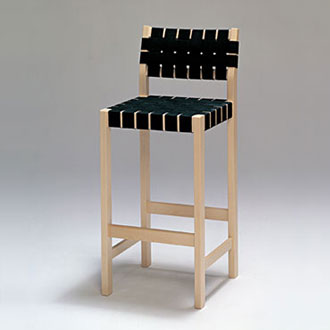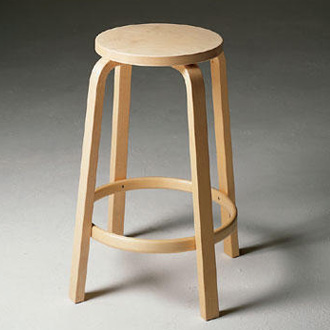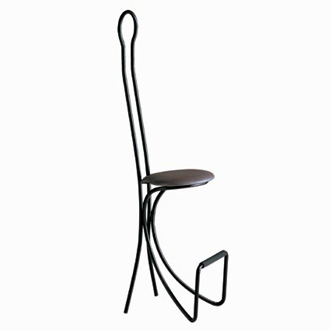The bar stool Tabouret de bar that Jean Prouvé created in the early 40ies harks back to traditional forms of this seating genre: a round disc resting on top of four long, canted legs. A ring is mounted to the legs at about a third of their height, increasing the rigidity of the construction and also serving as a comfortable footrest.
Prouvé's interpretation of this classic type is distinguished by its simple, unpretentious appearance, lucid construction and harmonious proportions. A remarkable characteristic in comparison to other bar stools is the pronounced splay of the legs, which enhances more than just the visual impression of stability.
With regard to materials, Prouvé chose the proven combination of wood and metal. The seat, with an open handle grip, and the legs – which taper toward the floor in the typical manner of Prouvé – are both made out of stained solid oak. The foot ring, on the other hand, is made out of tubular steel to withstand the wear and tear of intensive use.
Dimensions:
H 775 x Ø 602 mm (at the base)
Design:
Jean Prouvé
Manufacturer:
Vitra
Prouvé's interpretation of this classic type is distinguished by its simple, unpretentious appearance, lucid construction and harmonious proportions. A remarkable characteristic in comparison to other bar stools is the pronounced splay of the legs, which enhances more than just the visual impression of stability.
With regard to materials, Prouvé chose the proven combination of wood and metal. The seat, with an open handle grip, and the legs – which taper toward the floor in the typical manner of Prouvé – are both made out of stained solid oak. The foot ring, on the other hand, is made out of tubular steel to withstand the wear and tear of intensive use.
Dimensions:
H 775 x Ø 602 mm (at the base)
Design:
Jean Prouvé
Manufacturer:
Vitra






























